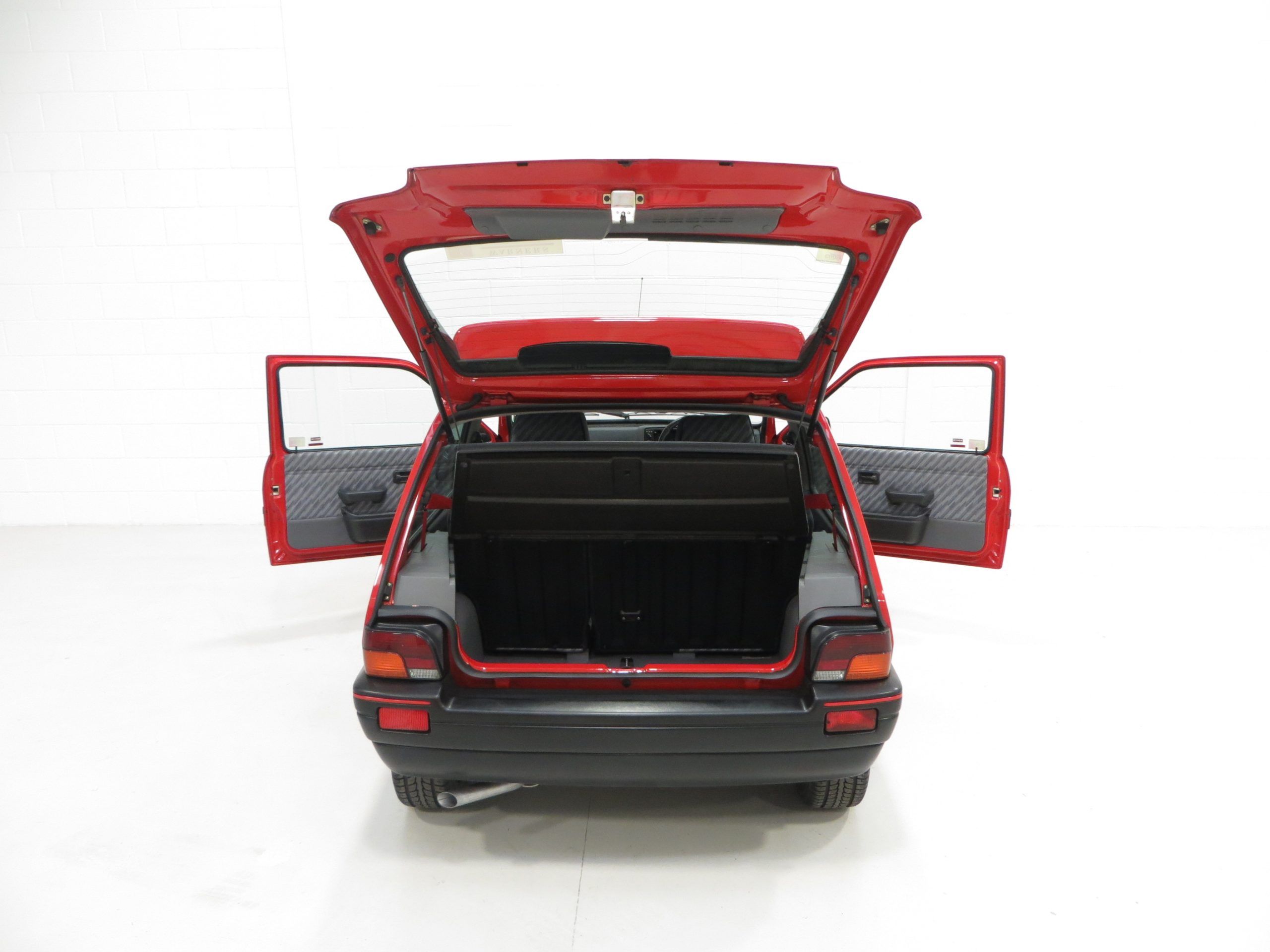

At launch, there was a problem with the enamel-coated alloys, which were too shiny and would cause the tyres to slip around the beads. That is, of course, if the Metro Turbo was moving at all. It didn’t, however, address the problem it was intended to address and, although it prevented boost arriving at the same time as peak torque, the gearbox failures it was meant to alleviate still came thick and fast. This early iteration of what’s now largely regarded as boost control was quite innovative technology and exists in most turbocharged cars today. It would expel air from a valve in the turbo hose if the intake pressure was above 4psi when running below 4,000rpm but would allow it to increase to 7psi at faster engine speeds, where peak torque was already surpassed. In road use, though, any more power would have been too much for the four-speed gearbox, especially as the transmission was lubricated by the engine oil.Īs a result, one of the cleverest features of the Metro Turbo was an electronically-controlled leak-off system from the turbo’s wastegate. Peak power was a rather modest-sounding 93bhp, though racing Metros could often muster double this. It was distinguishable from non-turbo models by its body kit, consisting of a front spoiler, wheel arch extensions and side skirts, along with flat-faced 13-inch alloy wheels with low-profile tyres. Aside from the hard-to-ignore turbo, though, it looked little different externally from a standard A-plus engine. The unit was significantly strengthened with materials and processes common to competition engines and came with many Turbo-only parts, such as a ported cylinder head, pistons, crankshaft, block and sodium-filled exhaust valves. Compressed air was delivered to a single SU carburettor that was modified to run with pressurised air, thanks to variable rate fuel pressure delivery to ensure it didn’t flood.

The engine was fitted with a Garrett T3 turbo on a specially designed and cast exhaust manifold.

YET THE METRO WAS MORE THAN A BADGE ENGINEERING EXERCISE, UNLIKE THE MG VARIANTS OF BMC SALOONS IN THE 1960S.īy fitting a turbo to the Metro, not only would it make the car a livelier hot hatchback but it would also allow Austin-Rover (as it was now known) to homologate a turbocharged model for use in motorsport. Enter the MG Metro Turbo, launched in August 1983. Shorter gearing meant it also felt much more eager than a standard Metro, albeit at the expense of being less refined at speed a situation not helped by the lack of a five-speed gearbox.Ī year later, the MG would evolve int a more serious hot hatch, with help of some engineering expertise from Lotus Cars Race Engineering, the team behind the turbocharged Lotus F1 cars. I'VE LOVED METROS FOR ALL OF MY LIFE SO TO HAVE AN MG IN IMMACUALTE CONDITION IS A REAL ACHIEVEMENT.Īn increased compression ratio upped the power output of the revised A-Plus engine to 72bhp, while other positive features included four-piston brake callipers that were among the best on any small car. There were sports instruments, too, along with red carpets and seatbelts (this was the ear of the yuppie, after all) and a three-spoke steering wheel. Inside, the sports seats were much improved. Yet the MG Metro was more than a badge-engineering exercise, unlike the MG variants of BMC saloons in the 1960s.įirst of all, it looked different, with a rear spoiler-cum-window trim that enveloped the rear glass, along with ‘Pepperpot’ alloy wheels and side graphics. Dyed-in-the-wool MG aficionados were somewhat offended by the way in which the famous octagon had returned not on a sports car but on a mildly- souped-up version of the Metro. It would bring with it the return of one of the most famous sporting names in the car industry, absent from showrooms for 18 months. While there were plans to create a performance version of the Metro from early on in the car’s life, it would be the summer of 1982 before that car appeared. Billed as ‘A British car to beat the world’, the little Metro was seen as key to revolutionising Leyland’s (later Austin- Rover’s) fortunes. Its closure coincided with the company’s big hope for the future – the new Metro supermini. IT’S THE EARLIEST MG METROS THAT ARE THE MOST DESIRABLE AND THE EXAMPLE IN OUR PHOTOS HAS TO BE ONE OF THE BEST. The 24th of October 1980 was a dark day for MG fans, as the Abingdon factory that had served as the brand’s home since 1929 shuttered its doors for the last time, closed as part of the Michael Edwardes plan to restructure the vast Leyland Cars operation. WORDS AND PHOTOS: CRAIG CHEETHAM MG METRO AT 40 It wasn’t a big hit with the purists but, today, Austin- Rover’s first hot hatch has quite a following… After the demise of Abingdon and the MG sports cars, the Metro arrived amidst some controversy.


 0 kommentar(er)
0 kommentar(er)
